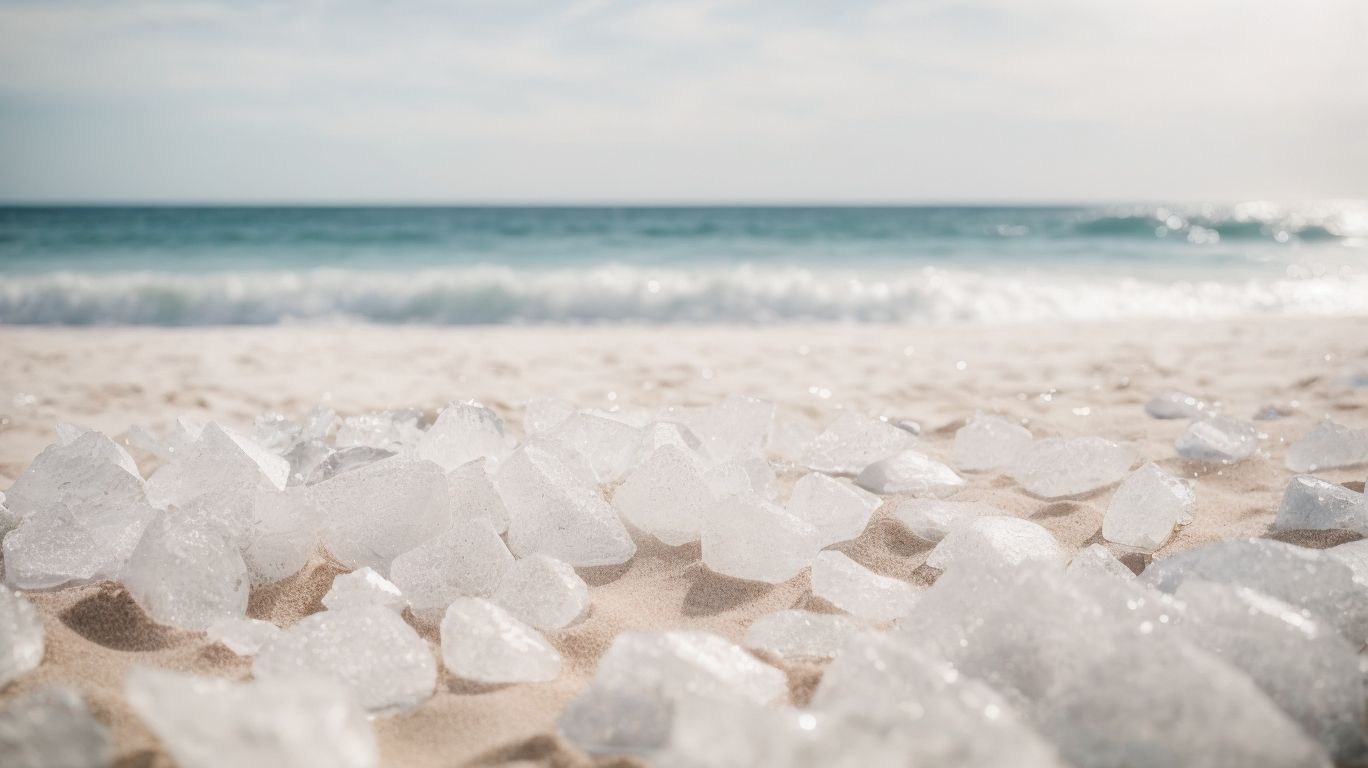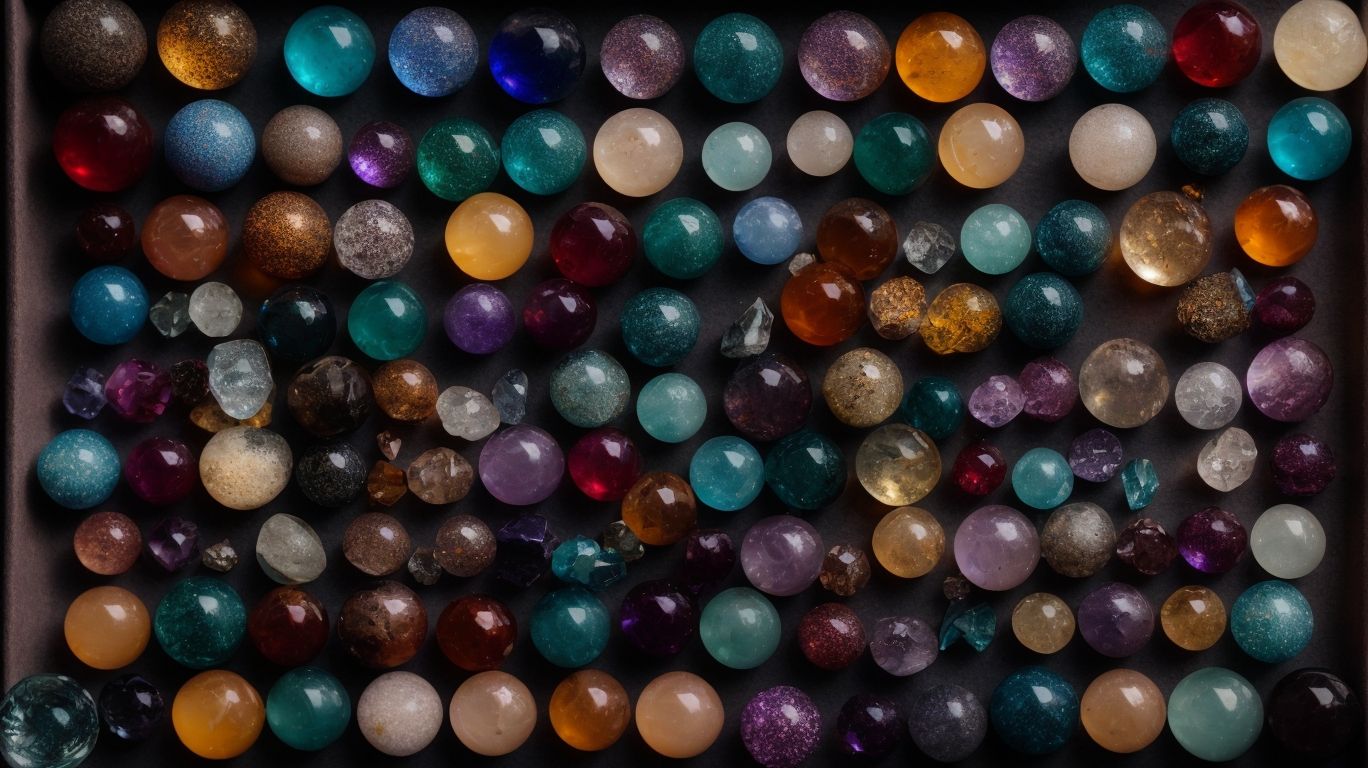
Coastal Gems: Discovering White Crystal Rocks on the Beach
The allure of walking along a pristine coastline, with the sound of waves crashing against the shore and the warmth of the sun on your skin, is a quintessential beach experience. But what if, in addition to the sun, sand, and surf, you could also stumble upon hidden treasures in the form of white crystal rocks? These dazzling, translucent formations, often found nestled among the pebbles and sand, have captivated beachcombers and geology enthusiasts alike for centuries.
In this article, we will delve into the world of white crystal rocks, exploring their origins, where to find them, and the various types and uses of these remarkable coastal gems. Whether you’re a seasoned collector or simply curious about these natural wonders, join us as we uncover the fascinating allure of white crystal rocks.
What Are White Crystal Rocks?
White crystal rocks are natural wonders formed through marine geology, characterized by their pristine beauty and unique crystal formations.
These mesmerizing formations are typically found in coastal regions where geological processes interact with marine elements. The geological significance of these rocks lies in their formation, which occurs as a result of precipitated minerals from the seawater. Over time, the gradual accumulation and compression of these minerals lead to the creation of stunning white crystals. The distinct characteristics of these rocks include their translucency, reflecting the interaction of light and minerals, making them a captivating feature of coastal geology.
Where Can You Find White Crystal Rocks on the Beach?
White crystal rocks can be discovered along the shoreline, nestled within the coastal beauty, offering a rewarding experience for beachcombers and enthusiasts of marine life.
Their glistening presence can be found in various coastal regions, from the rugged cliffs of the Pacific Northwest to the sun-kissed shores of the Caribbean. Exploring these beaches unveils a treasure trove of natural wonders, from tide pools teeming with vibrant sea creatures to the gentle rhythm of waves lapping against the shore.
The juxtaposition of the pure white crystals against the turquoise waters creates a picturesque scene that captivates the senses and draws in those with an appreciation for the magic of the sea.
What Are The Best Beaches To Find White Crystal Rocks?
The best beaches to find white crystal rocks are coastal gems, offering a rich tapestry of coastal discovery and natural attractions that captivate coastal tourism enthusiasts.
Visitors are drawn to these stunning beaches for the unique allure of their pristine white crystal rocks, which shimmer enticingly in the sunlight. The smooth, polished appearance of these rocks contrasts beautifully with the azure waters, creating an enchanting sight that leaves a lasting impression.
Coastal tourism thrives on the allure of these natural wonders, as tourists flock to these beaches for a chance to witness the captivating beauty of the white crystal rocks and immerse themselves in the natural splendor of the coastline.
How Are White Crystal Rocks Formed?
White crystal rocks are formed through intricate geological processes, shaped by coastal geosciences to create enduring natural treasures along the shorelines.
These geological formations are the result of sedimentary rock layers being subjected to immense pressure and heat over millions of years, leading to the crystallization of minerals such as quartz. Coastal environments play a pivotal role in this process, as the constant ebb and flow of tides may expose and erode these rocks, unveiling their striking beauty. Their geological significance extends to providing valuable insights into the Earth’s history and the forces that have shaped its landscapes over time.
What Are The Different Types Of White Crystal Rocks?
White crystal rocks encompass diverse types, each showcasing the mesmerizing beauty of nature along the seaside, waiting to be discovered and admired by enthusiasts.
Their translucent appearance and shimmering allure capture the essence of the serene seaside ambiance, drawing in admirers from far and wide. Whether it’s the intricate formations of quartz, the glistening facets of calcite, or the delicate glimmer of gypsum, these natural treasures evoke a sense of wonder and connection to the earth’s ancient history.
Exploring the various formations and patterns of white crystal rocks amidst the calming sound of the waves creates a truly enchanting experience, offering a profound connection to the natural world.
What Are The Uses Of White Crystal Rocks?
White crystal rocks serve multiple purposes, including decorative applications, healing properties, and diverse industrial uses, showcasing their versatility and value.
They are often used as stunning centerpieces in home decor, adding a touch of elegance and tranquility to any space. In healing practices, these crystals are believed to promote mental clarity, emotional balance, and physical well-being.
Their industrial applications range from optics and electronics to manufacturing and construction, highlighting their crucial role in various sectors.
Decorative Purposes
White crystal rocks are often sought for their aesthetic appeal, enriching coastal scenery and serving as captivating coastal attractions due to their decorative value.
Their glistening, pristine surfaces reflect the sunlight, creating a mesmerizing sparkle that adds a sense of wonder to the coastal environment. These rocks, when arranged tastefully along the shoreline, amplify the beauty of the beaches and create a serene, picturesque backdrop for coastal tourism and leisure activities.
Their natural allure forms an integral part of the charm that draws countless visitors seeking solace and inspiration amidst the soothing coastal landscape.
Healing Properties
White crystal rocks are associated with healing properties, often linked to the serene coastal environment and the mystique of marine life, offering a sense of natural tranquility.
Their glistening appearance resembles the shimmering waves of the ocean, and their formation over millions of years parallels the enduring resilience of coastal ecosystems. Many coastal dwellers are drawn to the energy these rocks exude, believing in their ability to cleanse negative emotions and restore inner balance, much like the ebb and flow of the tides.
The association of white crystal rocks with the marine environment evokes a deep connection to the healing power of nature, echoing the soothing sounds of waves and the gentle touch of sea breeze.
Industrial Uses
White crystal rocks find applications in various industrial sectors, leveraging coastal natural resources and contributing to initiatives focused on coastal conservation and sustainability.
They are particularly valuable in the production of glass, ceramics, and chemicals. These rocks are utilized in the manufacturing of high-quality glass products, such as mirrors, windows, and optical lenses. They play a crucial role in ceramic production, contributing to the creation of durable and aesthetically pleasing ceramic goods. These rocks are essential for chemical processes, including the production of chlorine and soda ash, supporting various essential industries.
Are White Crystal Rocks Safe To Touch?
White crystal rocks are generally safe to touch, embodying the soothing essence of seafoam and the timeless rhythm of waves washing onto shorelines, harmonizing with the coastal environment.
Their association with the natural beauty of seaside landscapes further adds to their allure, as they contribute to the tranquil ambiance of shorelines. The smooth texture of these crystals resonates with the gentle caress of ocean breezes, and their shimmering appearance reflects the iridescence of seafoam in the sunlight. This seamless integration with coastal terrains makes them a fitting symbol of the mesmerizing and calming influence of the sea.
What Are The Precautions To Take When Handling White Crystal Rocks?
When handling white crystal rocks during coastal exploration or adventure, it is essential to exercise caution and respect the integrity of the natural rock formations to preserve their coastal allure.
These white crystal rocks are not only visually stunning but also hold great geological significance, making it crucial to handle them with care. Observing safety measures such as wearing sturdy footwear to navigate coastal terrains and refraining from disturbing sensitive ecosystems is paramount.
It’s important to avoid removing rocks from their natural habitat and refrain from any action that could damage the delicate coastal environment. By following these precautions, enthusiasts can enjoy the beauty of these formations while ensuring their preservation for future generations.
How To Clean And Care For White Crystal Rocks?
Maintaining the pristine allure of white crystal rocks involves gentle cleaning and dedicated care, preserving their appeal as captivating coastal attractions that enrich the coastal tourism experience.
These shimmering white crystal rocks play a crucial role in enhancing the natural beauty of coastal environments, creating breathtaking vistas that draw visitors from near and far. Owners and caretakers of coastal areas understand the significance of meticulous upkeep to ensure that these stunning geological formations remain a highlight of the coastal landscape.
Regular cleaning and gentle maintenance not only contribute to the aesthetic appeal but also uphold the ecological balance, making them a vital component of the overall coastal tourism experience.
What Are The Best Ways To Display White Crystal Rocks?
The best ways to display white crystal rocks involve showcasing them as coastal treasures, celebrating their significance as captivating coastal discoveries that contribute to the coastal beauty.
One effective method of displaying these white crystal rocks is by placing them in glass jars or clear vases filled with sand or ocean-themed decor, evoking a sense of the coastal allure. Alternatively, arranging them in a decorative bowl alongside seashells and driftwood can create a visually stunning coastal centerpiece.
Integrating white crystal rocks into coastal-themed jewelry or home decor accents further enhances their role as coastal treasures, adding to the overall charm of coastal environments.
How To Identify Fake White Crystal Rocks?
Identifying fake white crystal rocks requires vigilance and awareness, ensuring the preservation of coastal tourism and the integrity of coastal conservation efforts aimed at protecting natural resources.
By implementing thorough inspection techniques, such as assessing the veining patterns, examining the clarity, and testing for hardness, one can effectively discern genuine white crystal rocks from counterfeits. The significance of this endeavor lies in upholding the beauty of coastal landscapes, safeguarding the habitats of marine life, and supporting the sustainable development of coastal regions.
Authentic white crystal rocks contribute to the allure of coastal tourism destinations and play a crucial role in the conservation of marine ecosystems, making their identification essential for environmental protection and economic prosperity.
What Are The Similar Rocks To White Crystal Rocks?
Similar rocks to white crystal rocks can be found along the beach, offering an opportunity for discovering nature’s coastal marvels and enriching the coastal environment with their presence.
Their unique shapes and textures contribute to the diversity of the coastal landscape, providing nesting spots for small marine creatures and adding to the allure of beachcombing adventures. These rocks also play a crucial role in stabilizing the shoreline, protecting it from erosion and creating habitats for a variety of flora and fauna. Their presence serves as a testament to the intricate balance of coastal ecosystems and offers a glimpse into the fascinating interplay between geology and marine life.




No Comments